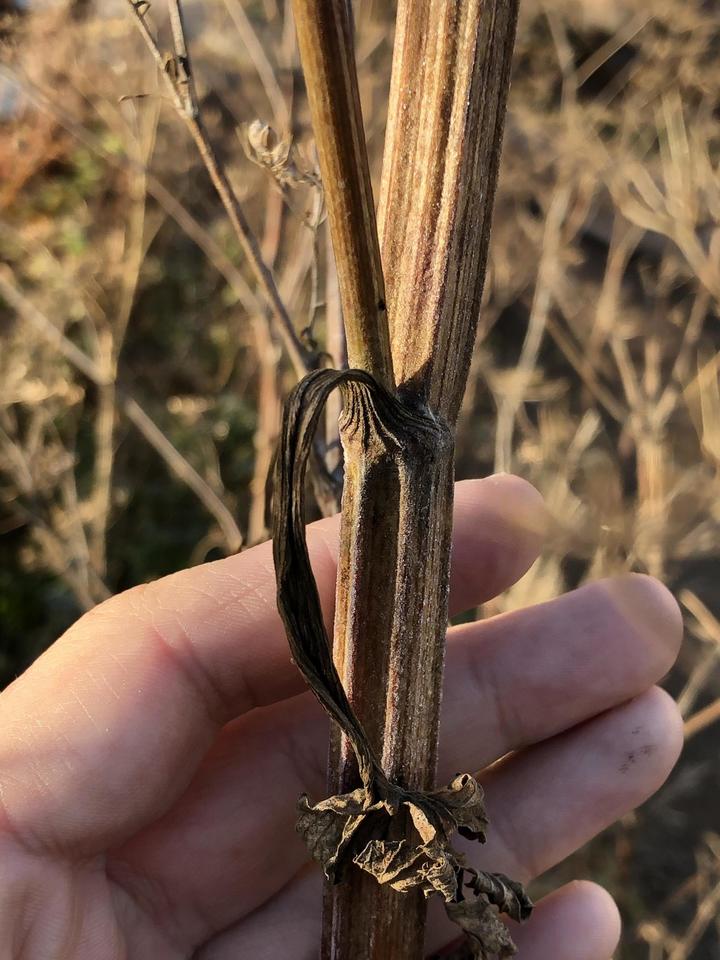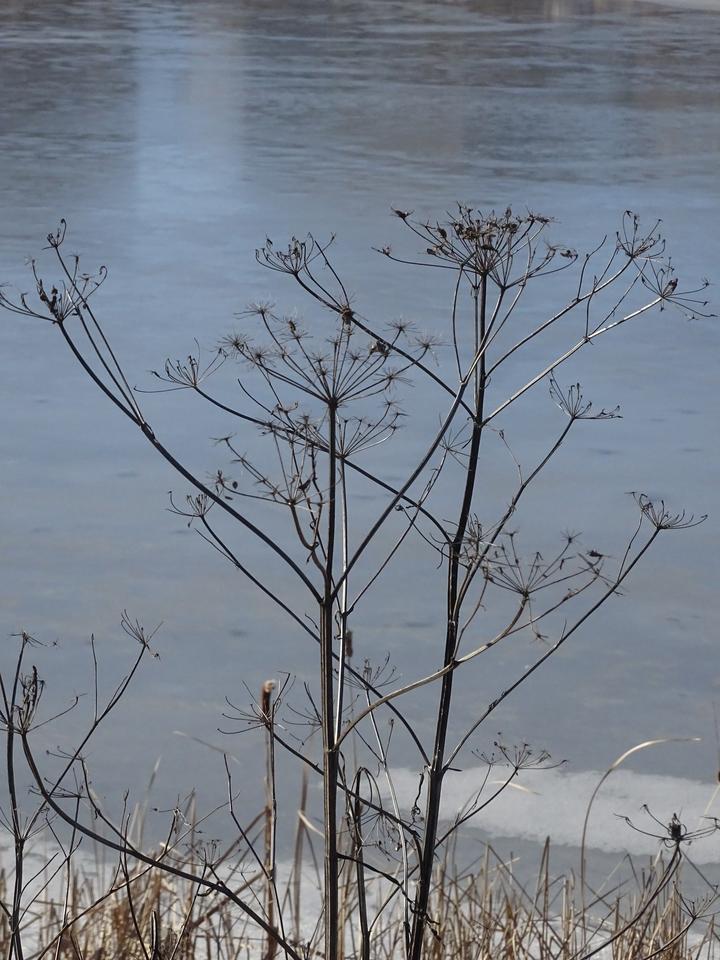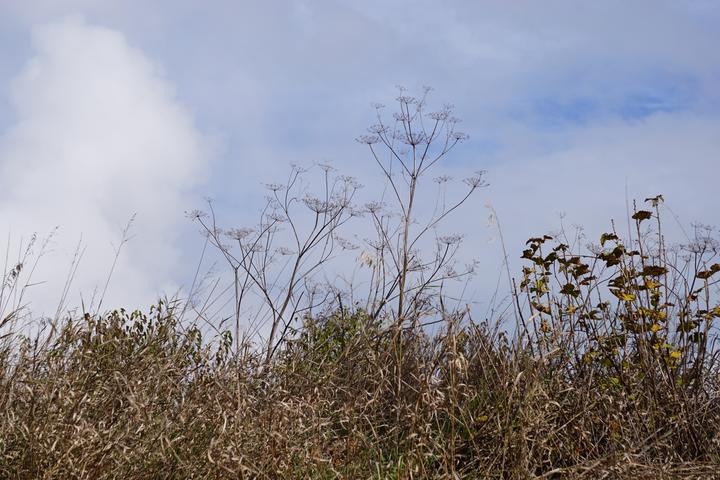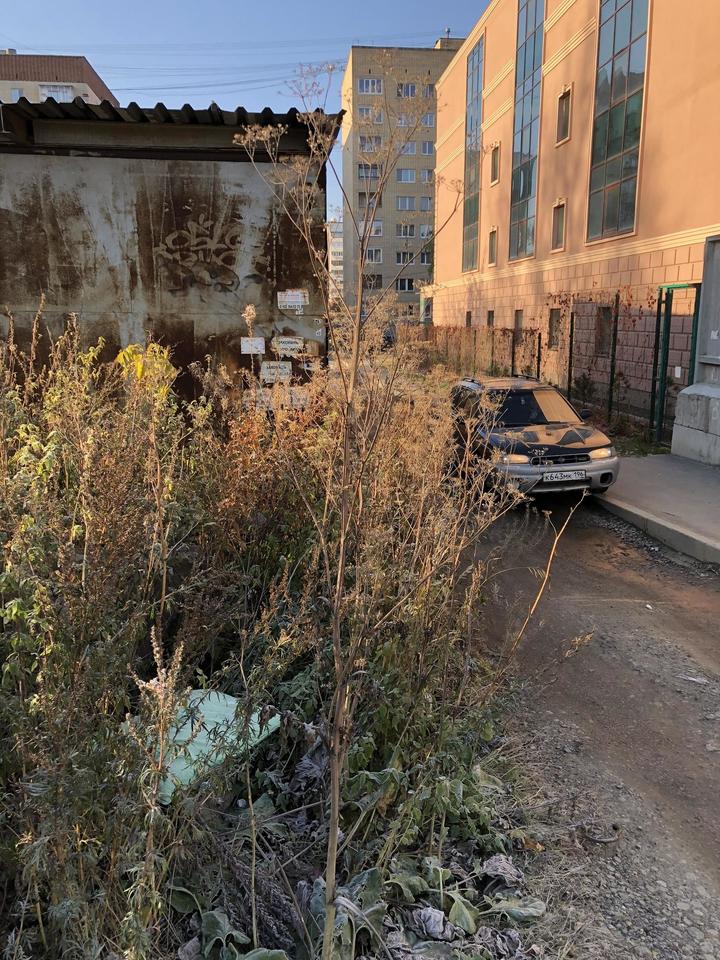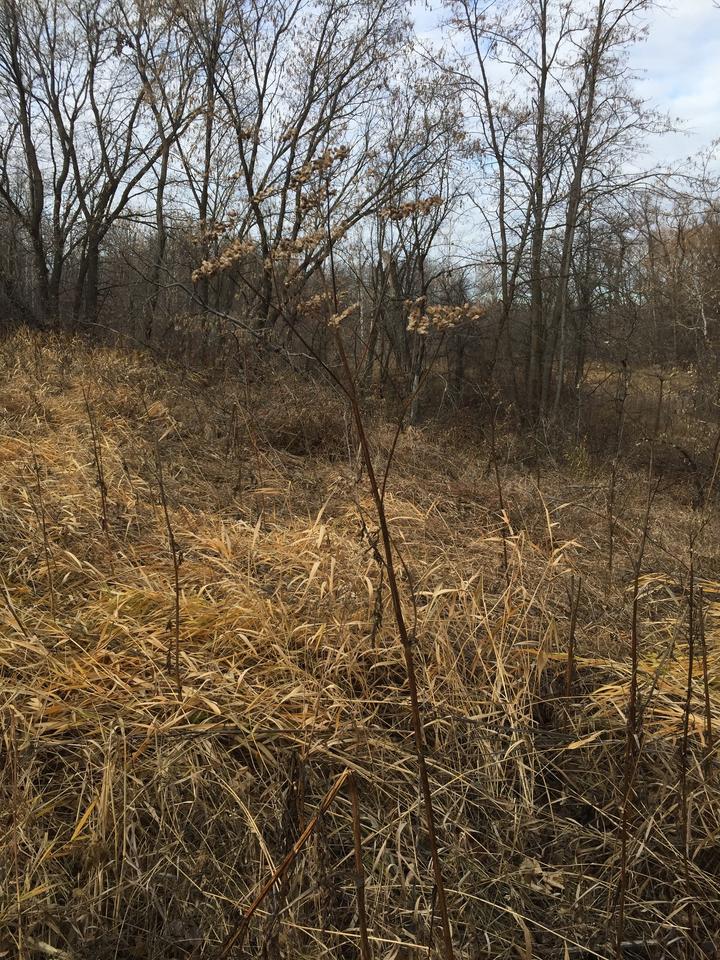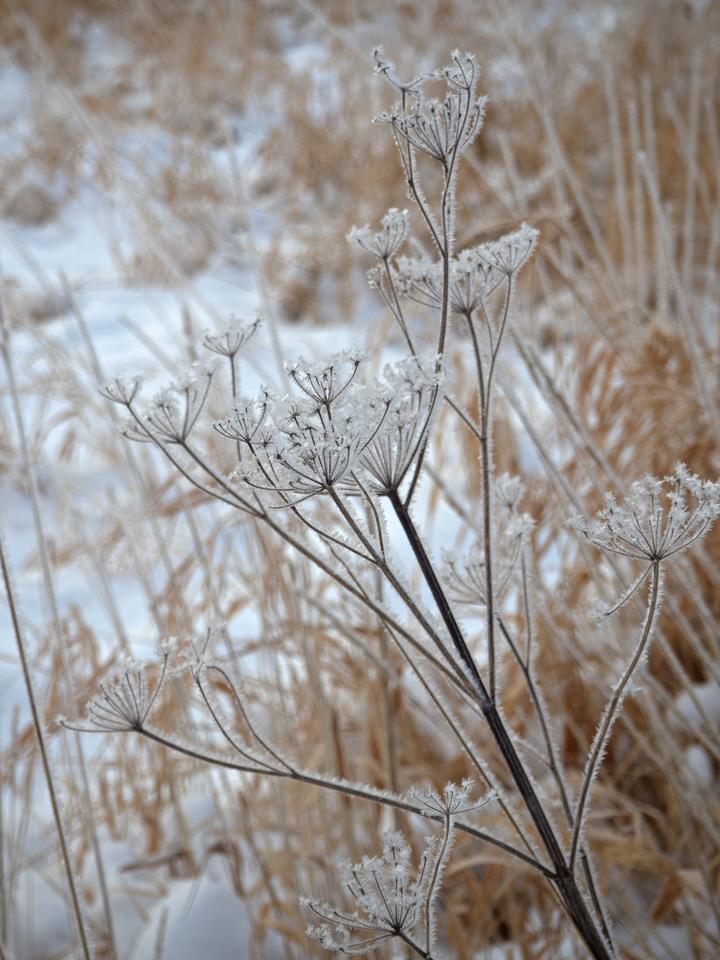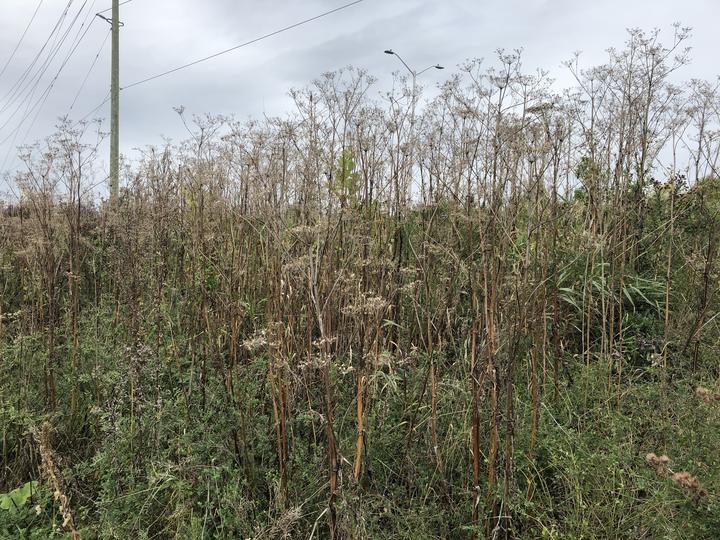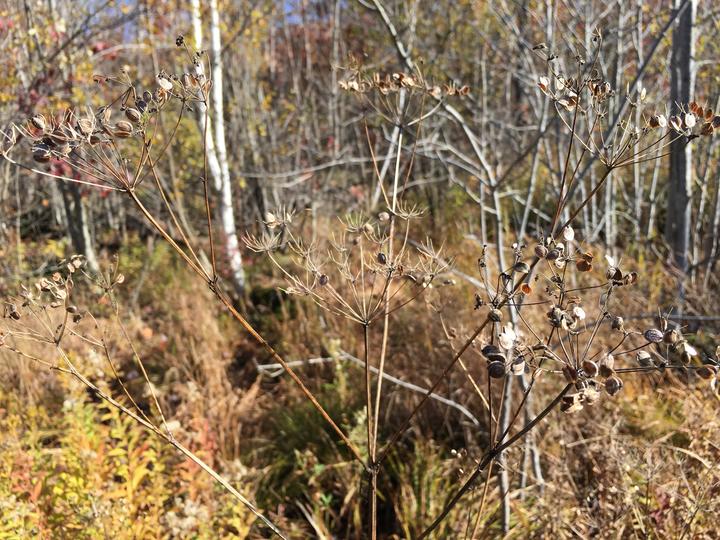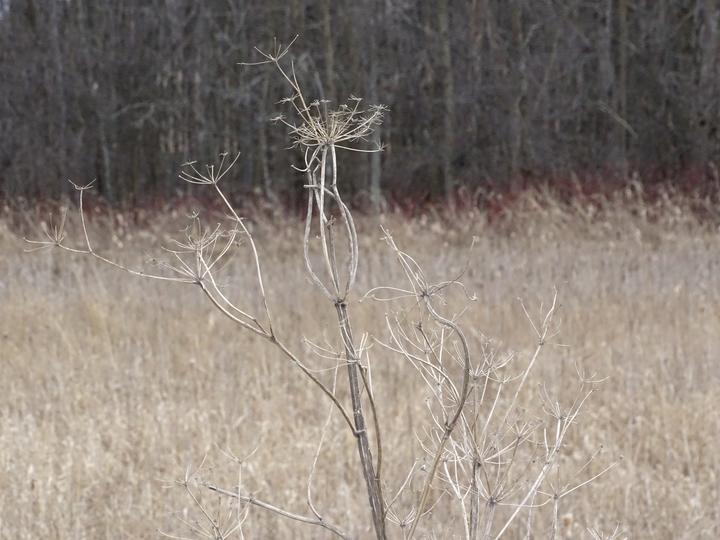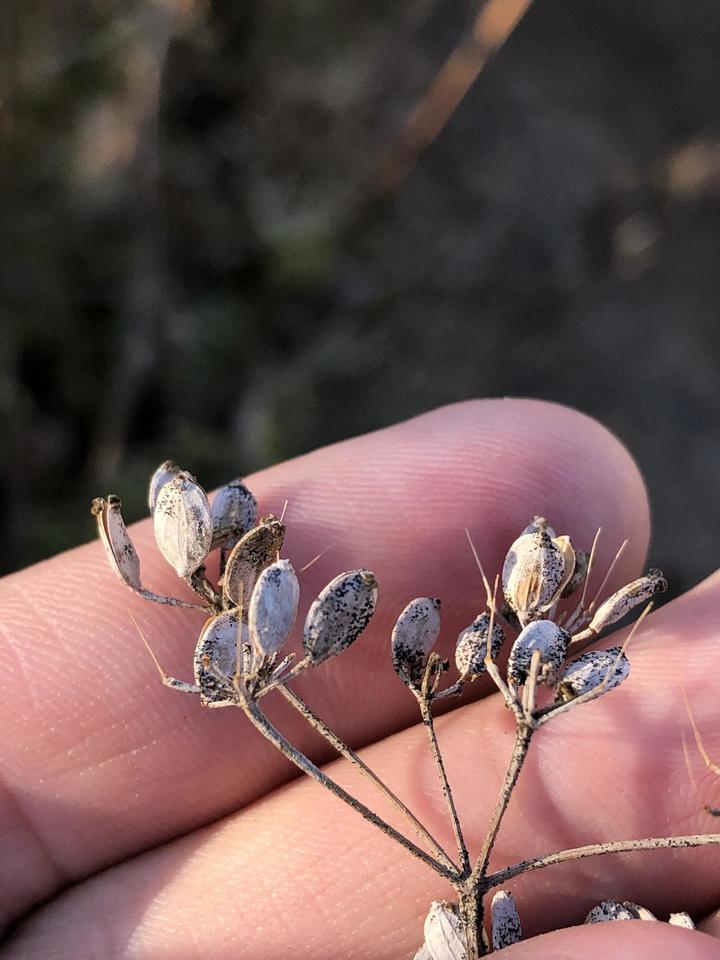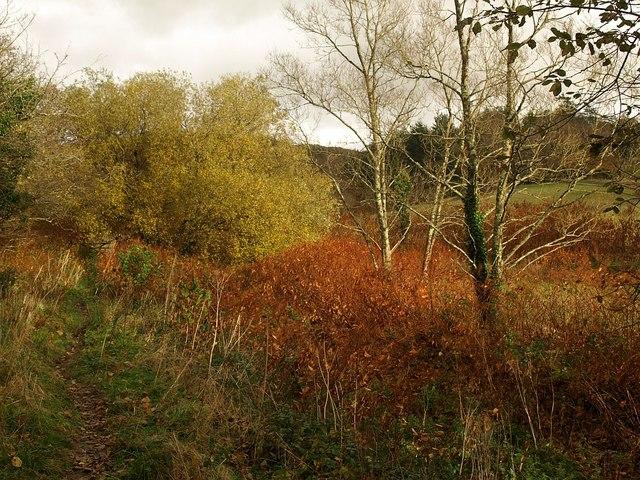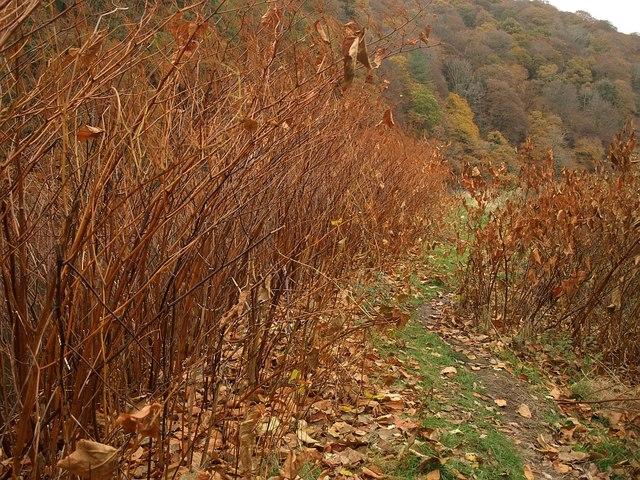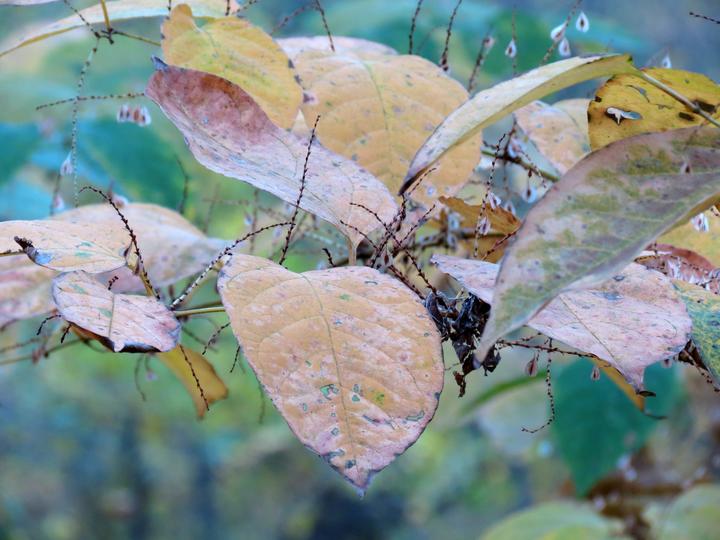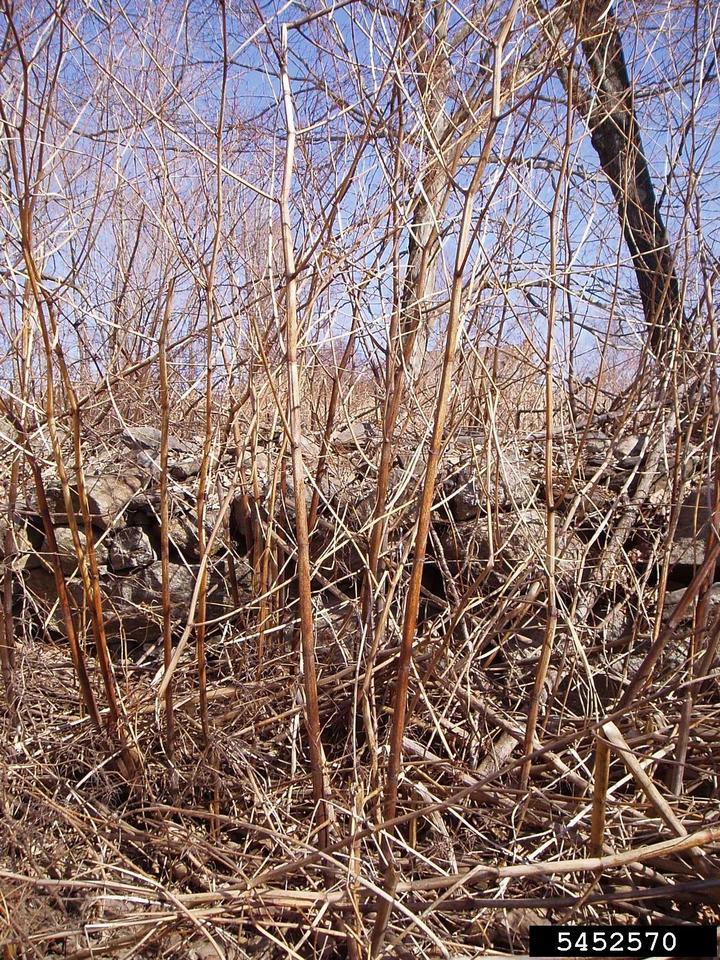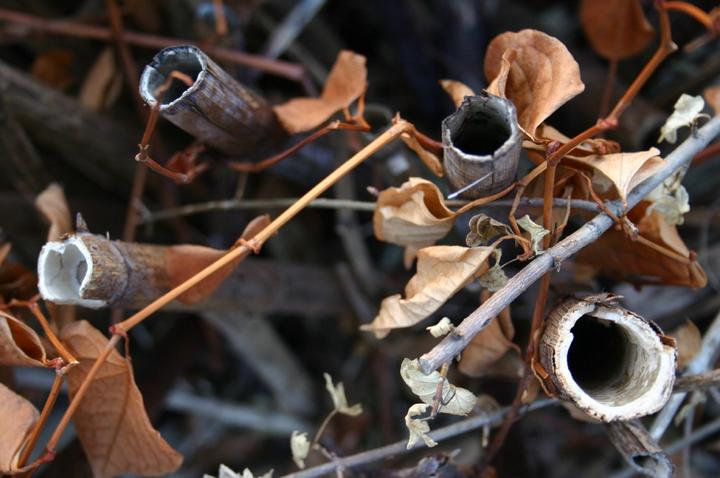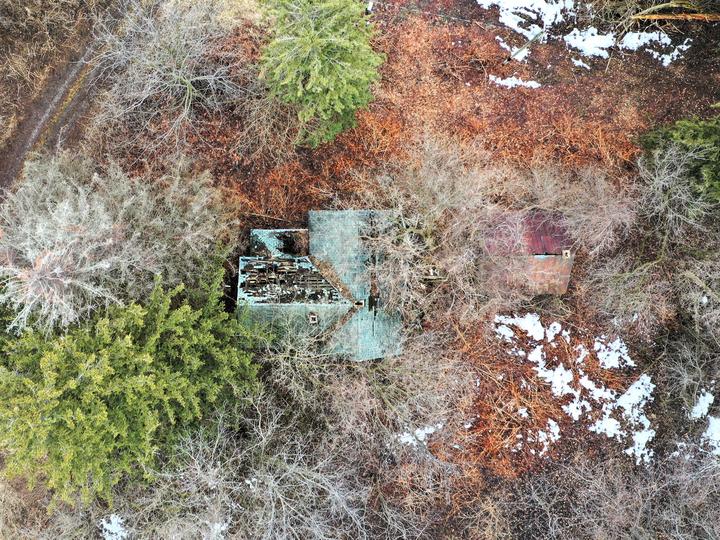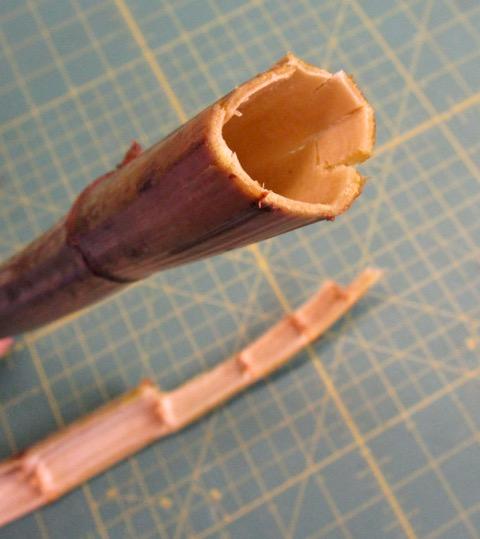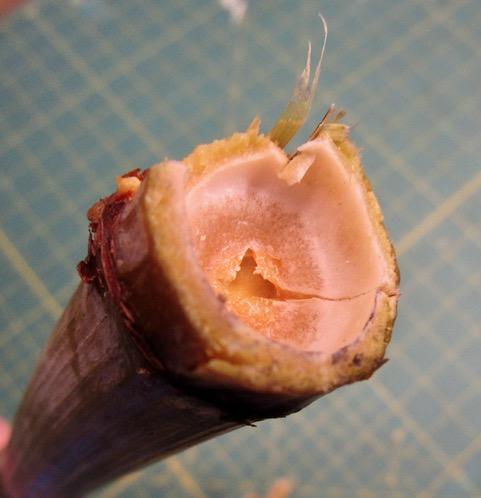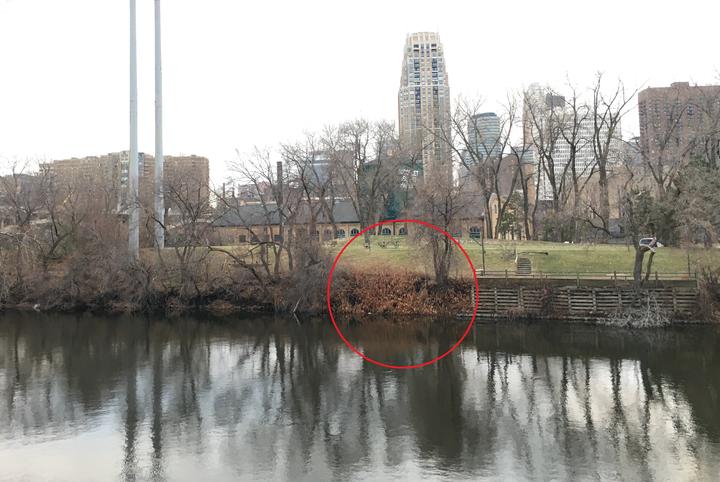Locating and marking wild parsnip and knotweed plants now is a great way to prepare for next year! Even though these plants are dead or dormant from November through early March, you can locate them rather easily. How? They have tall, distinct stems that persist in the environment. Learn what to look for and happy scouting!
Wild parsnip in fall and winter
Look for wild parsnip's tall, grooved, branching stems topped with umbel structures. Depending on local conditions, these stems can persist through early winter.
Images below show what to look for.
What you can see (or can't see): Wild parsnip plants that did not flower during the growing season will go dormant. These basal rosettes will be difficult or impossible to detect during fall and winter. On the other hand, plants that die after flowering remain visible through fall and into winter. Their tall stems can be easy to detect because they extend above lower vegetation.
Suggested strategy: Start by using EDDMapS or iNaturalist to find reports of wild parsnip in your area. Search these known locations. Because living parts such as leaves and flowers are absent during fall and winter, it may not be possible to identify a plant with absolute certainty. For this reason, take note of locations and revisit sites in the spring when you can identify plants with confidence.
Tips on marking plants: See Nature's Notebook FAQ
Knotweed in fall and winter
Look for knotweed's stems which often become rusty red or orange in the fall. Their bright colors stand out against a subdued winter landscape.
Images below show what to look for.
What you can see (or can't see): Knotweeds are perennial plants that die back in late fall. Belowground, the plant is dormant and will send up new shoots in spring. Throughout winter, dead stems persist in the environment unless they are manually removed. Often they take on a bright rusty color that stands out in the landscape. Further distinguishing knotweeds from many other plants in our region, their stems are round and hollow, resembling bamboo.
Because living parts such as leaves and flowers are absent during fall and winter, it may not be possible to identify knotweed varieties with absolute certainty. (That is, it will not be possible to distinguish Japanese knotweed from Bohemian or Giant knotweeds.)
Suggested strategy: Start by using EDDMapS or iNaturalist to find reports of Japanese knotweed in your area. Search these known locations. When you see plants resembling knotweed, take notes so you can relocate them. Revisit these sites in the spring when you can identify plants with confidence.
Tips on marking plants: See Nature's Notebook FAQ
